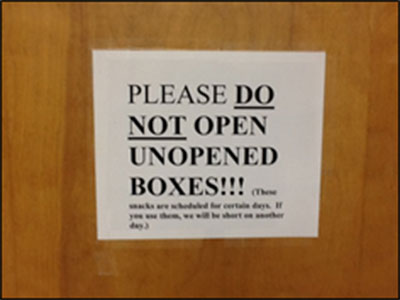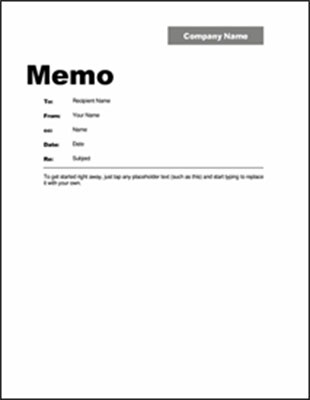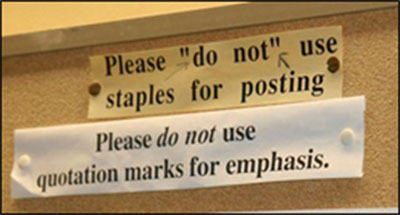
If you work in an office, you will find yourself using your writing skills for many purposes including assembling various reports, communicating with clients and other staff, and drafting policies. In today’s post, I’ll offer some tips for shorter internal office communications such as memos and bulletins for distribution electronically or in print and posted signs to convey specific information or instructions.
1. Make Your Message Clear.

Whether you are writing the text of a sign to post on the copier or a memo about a change of policy, make sure your message is clear. Before you write it, determine the essentials of what you want to communicate and run it by a colleague to make sure it makes sense. Making an outline of important ideas is helpful for a longer message.
2. Be Concise
Being concise can be difficult. I regularly write emails and then go back and remove half of the content because it’s unnecessary or reiterative. Make “write-reduce-revise” your habit when writing an office message to minimize unnecessary content that will distract from your main message.
Get a free sample proofread and edit for your English document.
Two professional proofreaders will proofread and edit your English document.
Be especially careful to avoid including unnecessary passive aggressive or accusatory statements in your message. Often people write signs and memos in reaction to situations they’d like to see changed, such as copier or office kitchen use or adherence to policies new and old. As such, it’s common for those writing signs and memos to have a little (or big) ax to grind, and they may find it difficult to keep their ax grinding out of the message. Rather than explaining with emotion several examples of why the memo is important and maybe even naming names or suggesting identities of offenders who made your memo necessary, just stick to what you want people to know and/or do. Unnecessary detail muddies the waters and may offend readers.
3. Use Appropriate Format

As far as signs are concerned, there is not a standard format. Just make sure your sign is neat, nicely designed, appealing, and appropriately formal for its use.
Memos should follow a standard format with the following sections:
Microsoft Word has several easy templates you can use to make your memo look really professional.


4. Edit and Proofread Your Message
Have someone else read your message after you’ve gone over it carefully. A second set of eyes will help you make sure what you’ve written makes sense, reads well, and is likely to have the most impact.
Careful proofreading and editing will also help prevent situations like the one a colleague of mine experienced. She described how the person who serviced her office’s copier machine was so incapable of writing clearly that his poorly written sign led people to use the wrong paper in the copier, thus causing the machine to jam once more. If only he’d had a pal or a proofreader give him some feedback before posting his sign!
5. Observe Your Organization’s Bulletin Board Policy.
Be aware that some organizations have a policy about posting signs and/or distributing/posting memos. Make sure to look into whether your organization has such a policy before hanging signs and sending memos, and follow it.

6. Remove or Update Signs and Memos in a Timely Manner
Leaving up signs or posted memos past when they are needed means memos become part of the office wallpaper and eventually get ignored, so make sure to update messages regularly.

Sarah P.
Get a free sample proofread and edit for your English document.
Two professional proofreaders will proofread and edit your English document.
Get a free sample proofread and edit for your document.
Two professional proofreaders will proofread and edit your document.
We will get your free sample back in three to six hours!